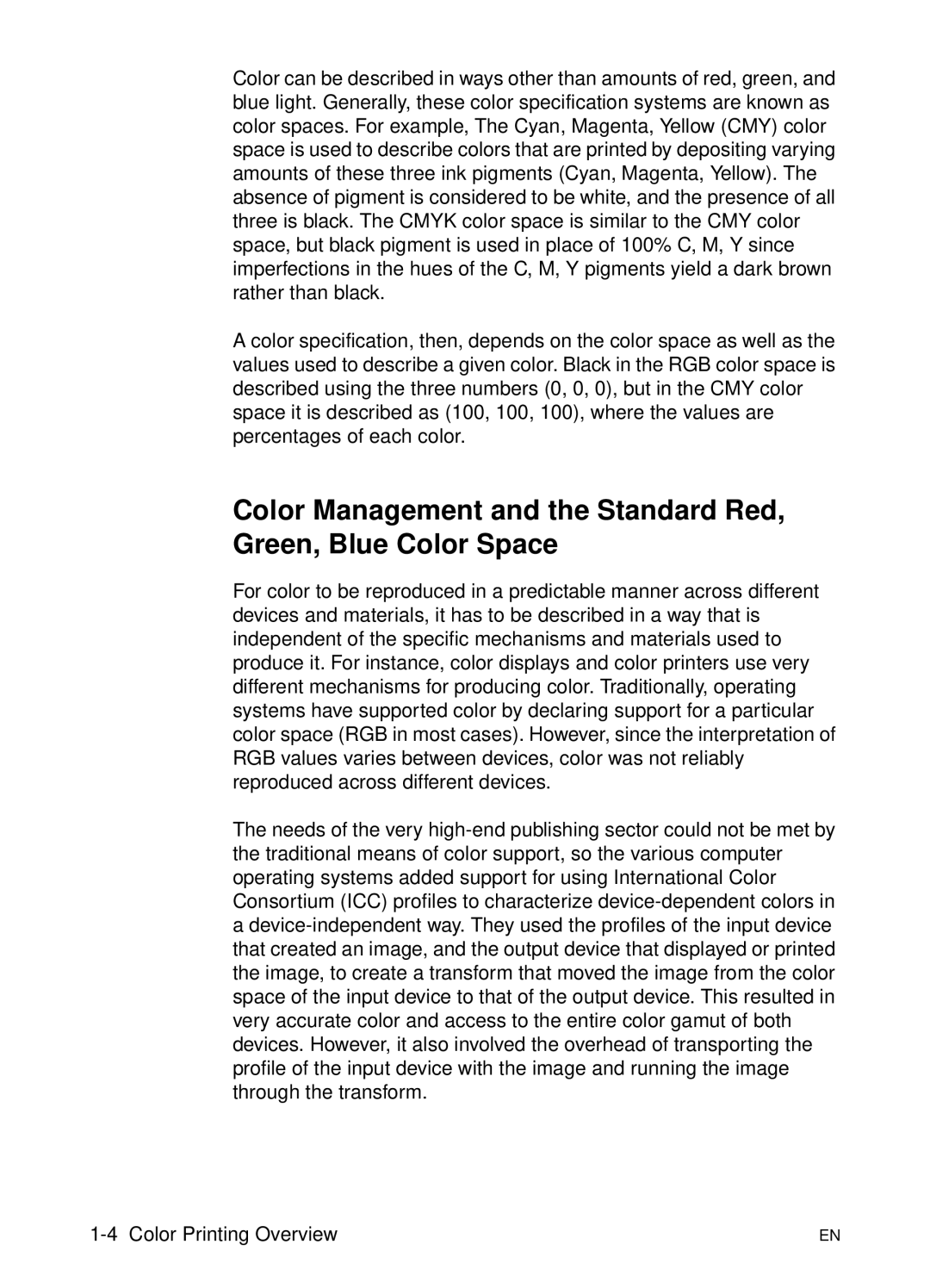Color can be described in ways other than amounts of red, green, and blue light. Generally, these color specification systems are known as color spaces. For example, The Cyan, Magenta, Yellow (CMY) color space is used to describe colors that are printed by depositing varying amounts of these three ink pigments (Cyan, Magenta, Yellow). The absence of pigment is considered to be white, and the presence of all three is black. The CMYK color space is similar to the CMY color space, but black pigment is used in place of 100% C, M, Y since imperfections in the hues of the C, M, Y pigments yield a dark brown rather than black.
A color specification, then, depends on the color space as well as the values used to describe a given color. Black in the RGB color space is described using the three numbers (0, 0, 0), but in the CMY color space it is described as (100, 100, 100), where the values are percentages of each color.
Color Management and the Standard Red, Green, Blue Color Space
For color to be reproduced in a predictable manner across different devices and materials, it has to be described in a way that is independent of the specific mechanisms and materials used to produce it. For instance, color displays and color printers use very different mechanisms for producing color. Traditionally, operating systems have supported color by declaring support for a particular color space (RGB in most cases). However, since the interpretation of RGB values varies between devices, color was not reliably reproduced across different devices.
The needs of the very
EN |
